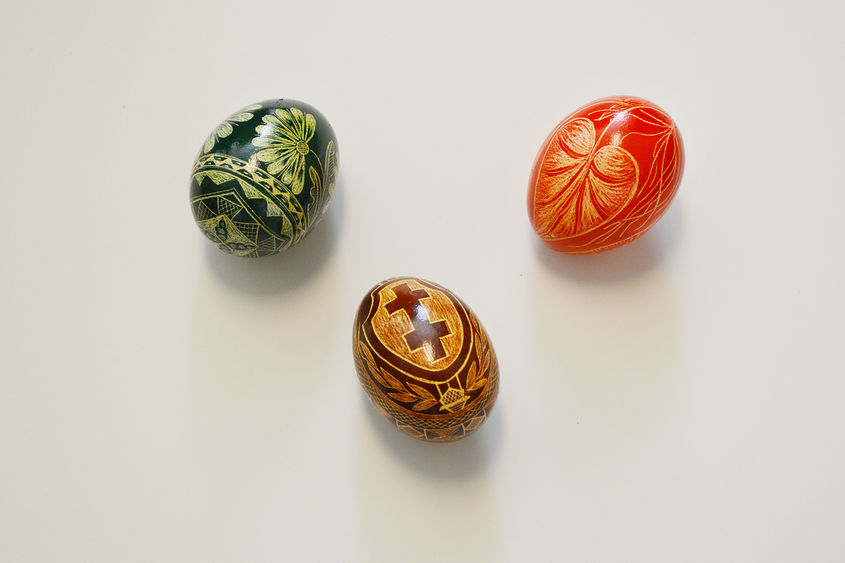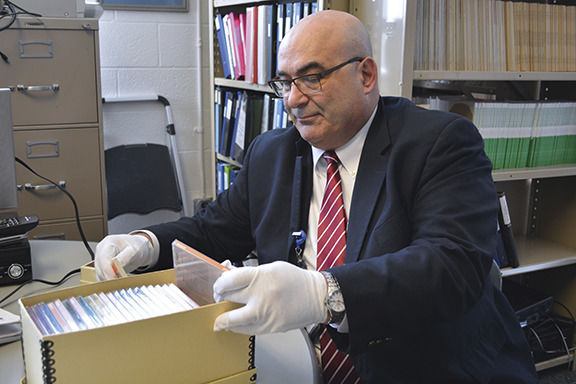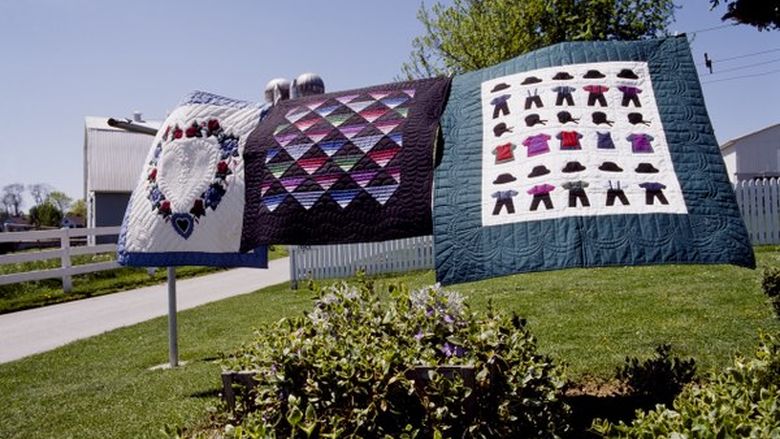
Ukrainian decorative eggs are a part of the extensive Pennsylvania Folk Life Archives, housed at Penn State Harrisburg.
MIDDLETOWN,, Pa. — Penn State Harrisburg’s Center for Pennsylvania Culture Studies, affiliated with the campus' School of Humanities, recently acquired a treasure trove of Pennsylvania folk art and folk life materials, which weave a unique, colorful tale about the diverse people and communities in Pennsylvania.
Folk and traditional culture tells the story, orally or by example, of the ideas and values of a particular group. Preserving, documenting and studying the rich culture and traditions of the people of Pennsylvania has been the focus of the center since it was established in 1990. The center provides programs, resources and support for the study of Pennsylvania’s cultural heritage, ensuring that the folk life or traditional culture unique to Pennsylvania is accessible to everyone.
The new collection, the Pennsylvania Folk Life Archives, was once maintained by the Pennsylvania Council on the Arts. With this collection, the center received a grant from the American Folklore Society to participate in the National Folklore Archives Initiative, an effort to document and provide access to information about folklore archival collections held by folklore programs at academic institutions, community-based cultural and ethnic organizations, nonprofit organizations, and state government-based arts and cultural agencies in the United States.
The collection also features materials from the Institute for Cultural Partnerships, which conducted projects with the arts of refugee communities, as well as the Governor’s Heritage Affairs Commission.
Permanently housed in Church Hall on campus, the collection joins other major folklore collections at the center, including the Mac Barrick Folklore Collection, the archives of Pennsylvania Folklore and Ethnography, and the Sue Samuelson Collection, giving the center the designation of the largest academic repository of folklore research in Pennsylvania.
The campus received the collection after the closing of the Institute for Cultural Partnerships, which had managed the apprenticeship program of the Pennsylvania Council on the Arts, and accumulated the folk life archives. It was the council’s desire to connect the materials to an academic center, because after 30 years of the apprenticeship program, rich potential existed for research, outreach, new fieldwork and exhibitions.
“Based upon this and the fact that we have a Ph.D. program in American studies with a folk life concentration and a certificate in folklore and ethnography, as well as an archival presence at our Center for Pennsylvania Culture Studies, it seemed to be a very good match,” said Simon Bronner, Distinguished Professor of American Studies and head of the center.
The vast collection is rich with materials from the apprenticeship program, which was established in the 1980s, including documentation of individuals who were masters of folk arts, as well as their apprentices. It includes a wide variety of audio and video recordings, manuscripts and photographs illustrating the crafts, music, dance and story from all over Pennsylvania, as well as the actual pieces crafted by individuals in the program. “It is a multi-media collection,” Bronner said. “It will help us conduct generational studies in time, to see what happened to those younger people who learned from the older masters.”
The collection features the work of folk art masters skilled in arts from all over the world. Representation includes European American – Ukrainian, Lithuanian, Balkan, and Polish.
As the Institute for Cultural Partnerships was involved in refugee programs, there are also folk arts from recent refugee populations and immigrant populations from Africa.
Bosnian, Latin American, and African-American techniques are included, as well as post-Vietnam War Asian, such as the Hmong, who settled in the Philadelphia, Lancaster, and Lebanon areas and produced a stunning textile art. There is also Chinese paper cutting, Indian dance, Pennsylvania German foodways and Native American material. Other expertise includes lace making, embroidery, decorative egg making, calligraphy, oud and bouzouki playing, ethnic dancing and hair braiding techniques.
Photographs in the collection chronicle cultural and social experiences of America, including weddings, Jewish bar mitzvahs and Latin American quinceañeras.
“Pennsylvania has always had a rich, multicultural heritage, that’s part of what this project — the folk and traditional arts program of the Pennsylvania Council on the Arts — was set up to document and preserve,” Bronner said.
Bronner added that the collection is important because it “is a legacy of creativity that one is not going to find in the schools or the galleries,” and noted that these cultural traditions belong to Pennsylvania families and communities — in churches and synagogues, as well as cultural institutions like festivals and county fairs.
“In one sense, it is a legacy of creativity that I think can be inspiring and gives us a rich sense of diversity,” Bronner said. “On the other hand, it’s very important for the identities of many of those people who may not have a connection to their culture, but want to gain from what their forbearers have been able to do.
“We have a record of it now, and we take it seriously. We want to promote it and disseminate it.”
The goal is to make the collection accessible to the public, and use the materials for outreach programs, exhibitions and hands-on workshops of some of the arts, as well as hold public performances of these artists.
“It will be a living archive in a sense that we will document, catalog and archive the collection, but we want to use it to promote those people — in performance and practice, as well as encourage faculty, staff and students to utilize the materials for projects and publications.”
Several graduate students — Lesley Ham, Nate Davis, David Beecher and Cory Hutcheson — are assisting Bronner with archiving and cataloging the collection, with plans to add another student thanks to the American Folklore Society grant.
The students’ tasks include assisting scholars with research, inventorying holdings and digitizing material and storage.
Davis stressed the importance of preserving these items so that future generations can learn from the past. “Collections such as this recognize the hard work of many people over the years,” he said. “Not everything is a brilliant article or work of art. The day-to-day items are a part of history, too.”
Beecher added that “folklore is broad — it includes written history, oral history, stories, pictures and more. Because it is sort of ambiguous, it becomes even more important to properly catalogue and store anything you can get, otherwise this information, which typically defines the past of a group of people, can be lost forever. It’s exciting to be part of a project that will be a useful research tool for the future.”
Bronner hopes to have the collection accessible to the Penn State Harrisburg, local and statewide communities in the spring. He is working with the college library on curatorial practices and would like to catalog the media in a way that it will be available through Penn State’s library catalog system.
Bronner also sees a material cultural lab in the future, a place where artifacts could be stored and displayed on campus, for study and observation, as well as conferences discussing the archival process and the state of folk art in America.
“There is a lot of public interest in handcrafts and the do-it-yourself movement. It’s exciting and something we can get our students involved in,” Bronner said. “So rather than talking about art, we can say ‘here it is to enjoy, study and exhibit.’”





